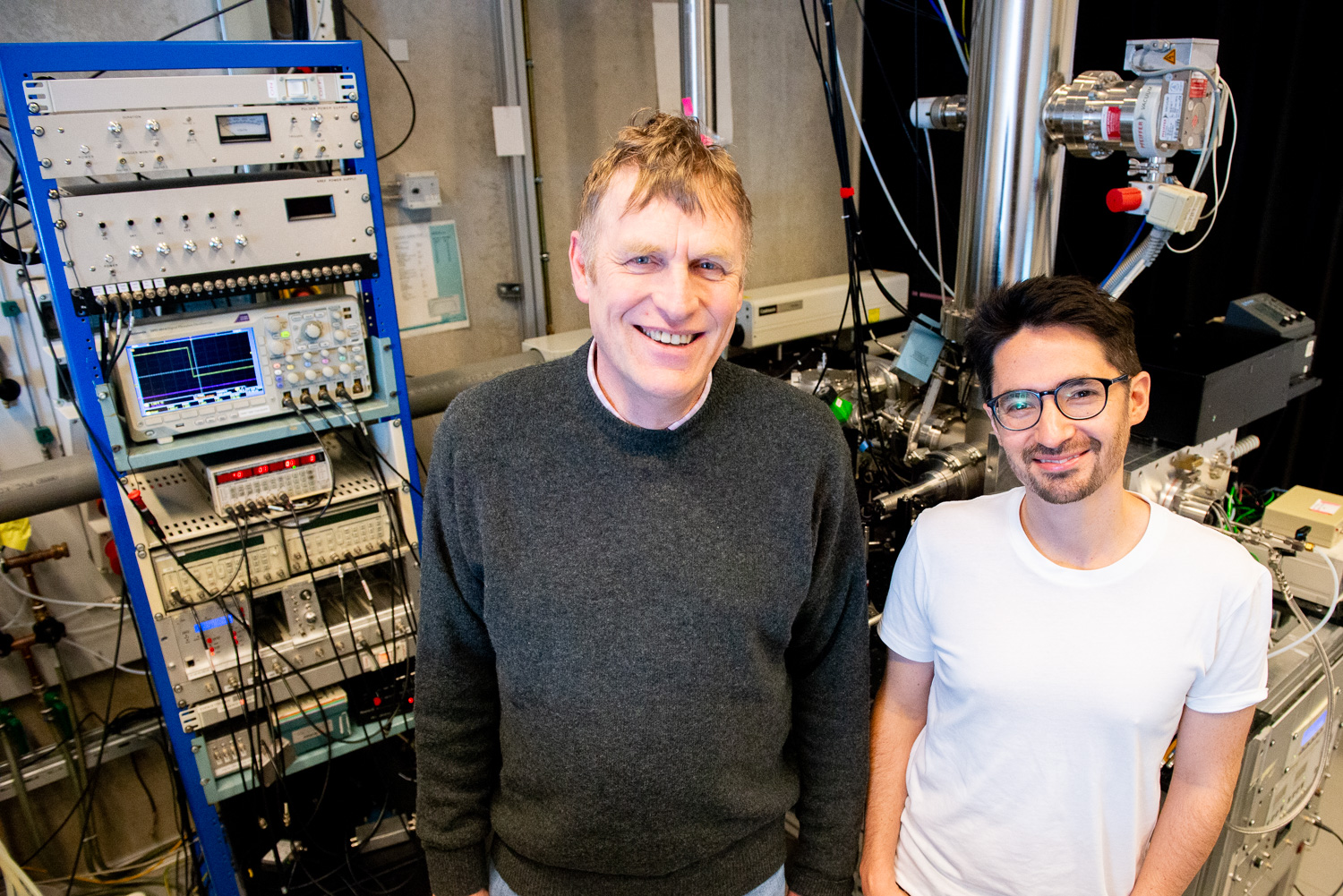Studying the tiny stretches of molecules in the lab, to unravel space mysteries

UvA researcher Wybren Jan Buma and HEML-FELIX researcher Piero Ferrari Ramirez in the lab
Even though the density of molecules in space can be incredibly low, the immense timescales of the universe allow these molecules to eventually meet and interact, resulting in unique chemical reactions. These molecules are primarily found in molecular clouds, where, under the right conditions new planets and stars are born. However, the exact processes that lead to the incorporation of such molecules into planets like Earth is still somewhat of a mystery.
Therefore, we want to understand which molecules are present in molecular clouds in space, what their structure is, and how they interact and behave. However, we can’t simply go to space and grab these molecules. Instead, we rely on space telescopes like the cutting-edge James Webb Space Telescope (JWST) to study these molecular clouds from afar. Nevertheless, we still need to know what to look for in astronomical observations, which means having detailed “fingerprint” information about the potential species in space.
Simulating space conditions in the lab
To better understand molecules in space, researchers attempt to replicate space-like conditions in the lab. ‘That means creating extremely cold environments with low density, so that molecules rarely meet’, explains Piero Ferrari from HFML-FELIX. ‘This is something we can do at our research facility. We also use highly intense infrared lasers to study the structure (and infrared fingerprint) of molecules. One of these lasers, called FELIX, operates within a wavelength range that matches some of the infrared instruments onboard space telescopes. This allows us to analyze molecular fingerprints in the lab and directly compare them to measurements from space.’
Throwing molecules at supersonic speeds
In his latest research – a collaboration with NASA, the University of Amsterdam, and others – Ferrari studied a specific type of molecule called a Neutral Cyano-Polycyclic Aromatic Hydrocarbon. The word neutral is important here. While much research focuses on charged particles, which can be controlled using electrical fields, such as in an ion trap, neutral particles don’t offer this advantage. As a result, studying uncharged molecules is more challenging. Instead of being guided by electric fields, they are sent through a vacuum at supersonic speeds, moving freely in one direction.
To analyze these molecules along a roughly one-meter-long “space racetrack”, they are caught with a laser beam – like a baseball bat striking a ball – causing the flying molecules to interact with the laser. ‘This interaction provides a wealth of information that can be used to determine a molecule’s fingerprint’ Ferrari says. ‘You know how fast they moved over a certain distance, and you know how they reacted to the laser beam.’
Molecules are not static, they can bend, stretch and wiggle. These vibrations happen at specific wavelengths, typically within the infrared range. When a laser shines on a molecule, it only absorbs the photons at wavelengths that match its distinct vibrations. This interaction between infrared laser light and the molecules provides information about their geometry and composition: their fingerprint.
Back to space
In this study, the molecule analyzed has a specific pair of atoms – one extra carbon and nitrogen forming a “long antenna” that stretches and contracts like a spring. The frequency at which these carbon and nitrogen atoms vibrate is unique to the Neutral Cyano-Polycyclic Aromatic Hydrocarbons, making it an ideal fingerprint signal for identifying such molecules in space. ‘We have now succeeded in pinpointing this very tiny movement for this particular type of molecule under conditions relevant for astrochemistry.’
Not only does this give astronomers something very precise to look for when studying molecular clouds in space, it has also helped quantum chemists at NASA to develop novel computational methods to precisely predict the frequency of the carbon-nitrogen stretch. With this new method, researchers can now accurately predict the vibrational fingerprints of other Cyano-Polycyclic Aromatic Hydrocarbons, of varying sizes and shapes. These advancements will help astronomers to find such molecules in space by looking at the sky in the infrared.
The paper can be found in The Journal of Physical Chemistry Letters: